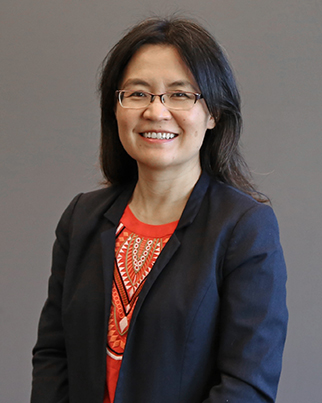Yue Qi was in Providence the weekend before COVID-19 shuttered campus, as part of a March 2020 student visit day meant to encourage the best prospective graduate students to join Brown Engineering the following fall. Qi had already accepted her new position as the Joan Wernig Sorensen Professor of Engineering and was beginning the task of outfitting her laboratory with the graduate students she wanted. But by the time she would make it back to campus 26 weeks later for her official start date, College Hill, like everywhere, was sheathed in masks and social distancing.
It was no deterrent for the woman who believes barriers are meant to be eliminated.
 In 1996, when she had received her bachelor’s degree in materials science and computer science from Tsinghua University, and was looking for her advanced degree, “America was the center of technology, and if you wanted to study something new, it was natural to come to the United States,” she said. So she made her way to the California Institute of Technology for her Ph.D. in materials science, studying atomic simulations.
In 1996, when she had received her bachelor’s degree in materials science and computer science from Tsinghua University, and was looking for her advanced degree, “America was the center of technology, and if you wanted to study something new, it was natural to come to the United States,” she said. So she made her way to the California Institute of Technology for her Ph.D. in materials science, studying atomic simulations.
An internship with GM while at Caltech opened the door for future employment. With graduation looming, she considered her options, and nudged by the feeling that industry did not know the early importance of atomic simulations, returned to the automobile industry leader. “It seemed like more of my group mates went to national labs and academia, but I wanted to try this,” she said. “I felt like I wanted to convince the mainstream that atomic simulations were important. The thing was, General Motors didn’t really know what to do with me. So I was given freedoms. It was quite the luxury to talk to different people to figure out which projects to focus on.
“Modelers translate practical problems to critical questions that can be addressed by thousands of atoms. So that required my co-workers and me to come together to decide what was important. In real life, many things happen together. In atomic modeling, you want to pick one or two very important processes (or mechanisms) to study at a time.”
One of those things she examined during her time in GM’s Global Research and Development Center was the grain boundary structures of aluminum panels to find ways to improve them for strength and flexibility. She also worked on both fuel cells and lithium-ion batteries to try “to understand how batteries fail so we can make them last longer and be safer,” she said.
It was while she was there, she was sent on assignment to spend two weeks during the summer of 2003 at Brown, hosted by Bill Curtin. “For me coming to Brown is not coming to a new place, it’s like an old, familiar place. Over the years I have produced joint papers with Brian Sheldon, Bill (Curtin), K.S. Kim, Allan Bower, Vivek Shenoy, and Huajian Gao. I’ve been on the Ph.D. committee of several students and hosted them for summer research at GM. I am very familiar with Brown faculty and students.”